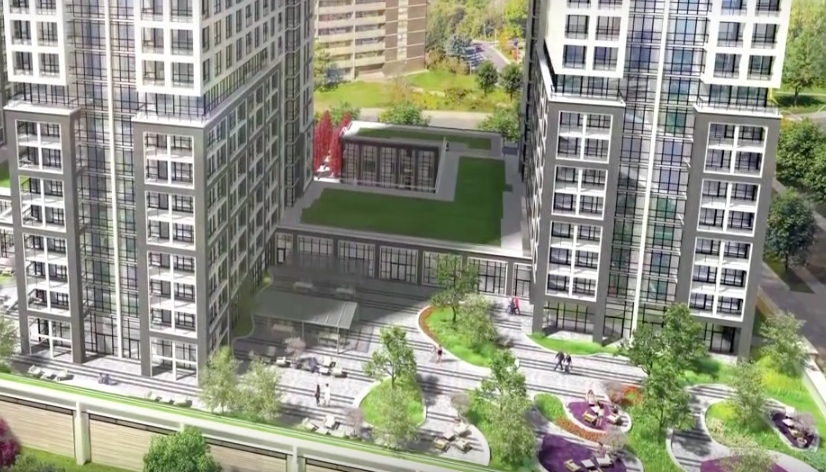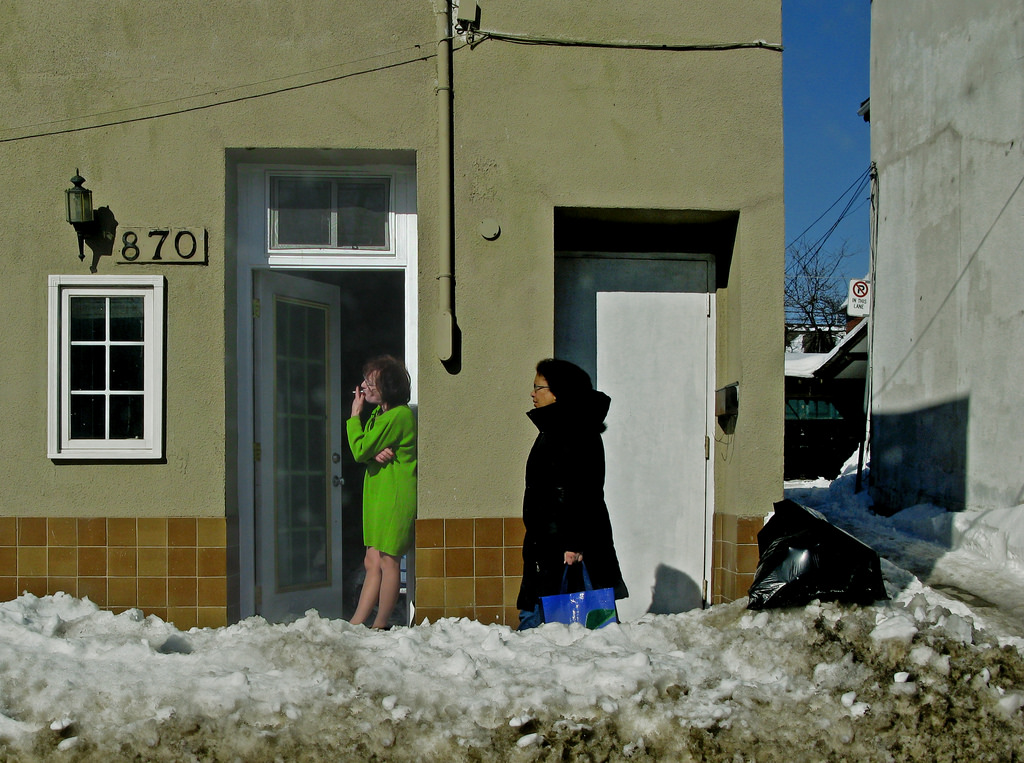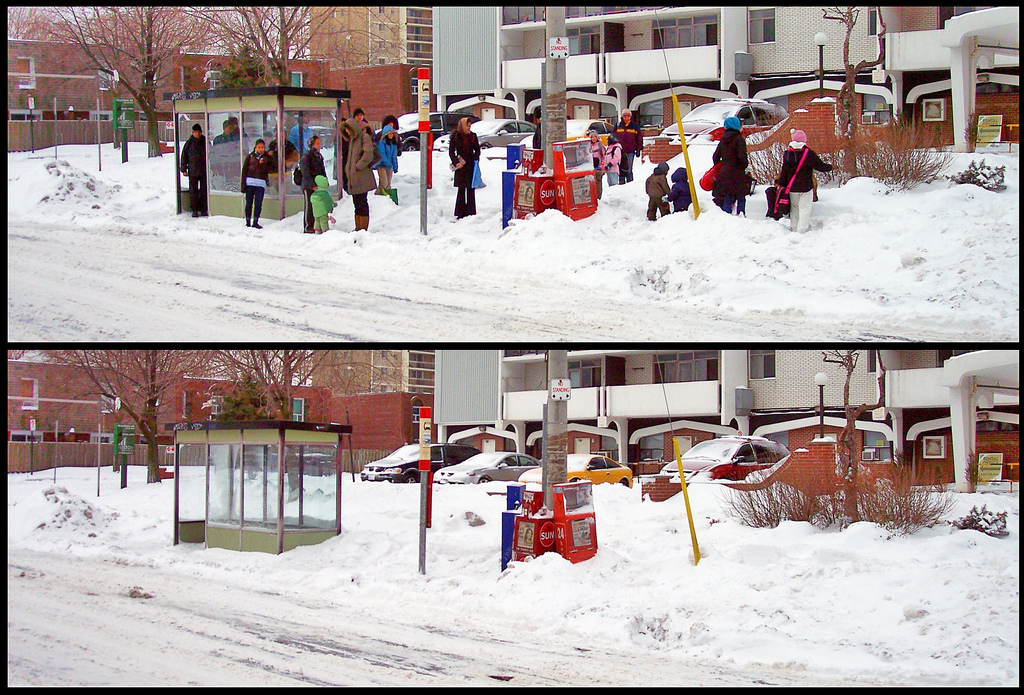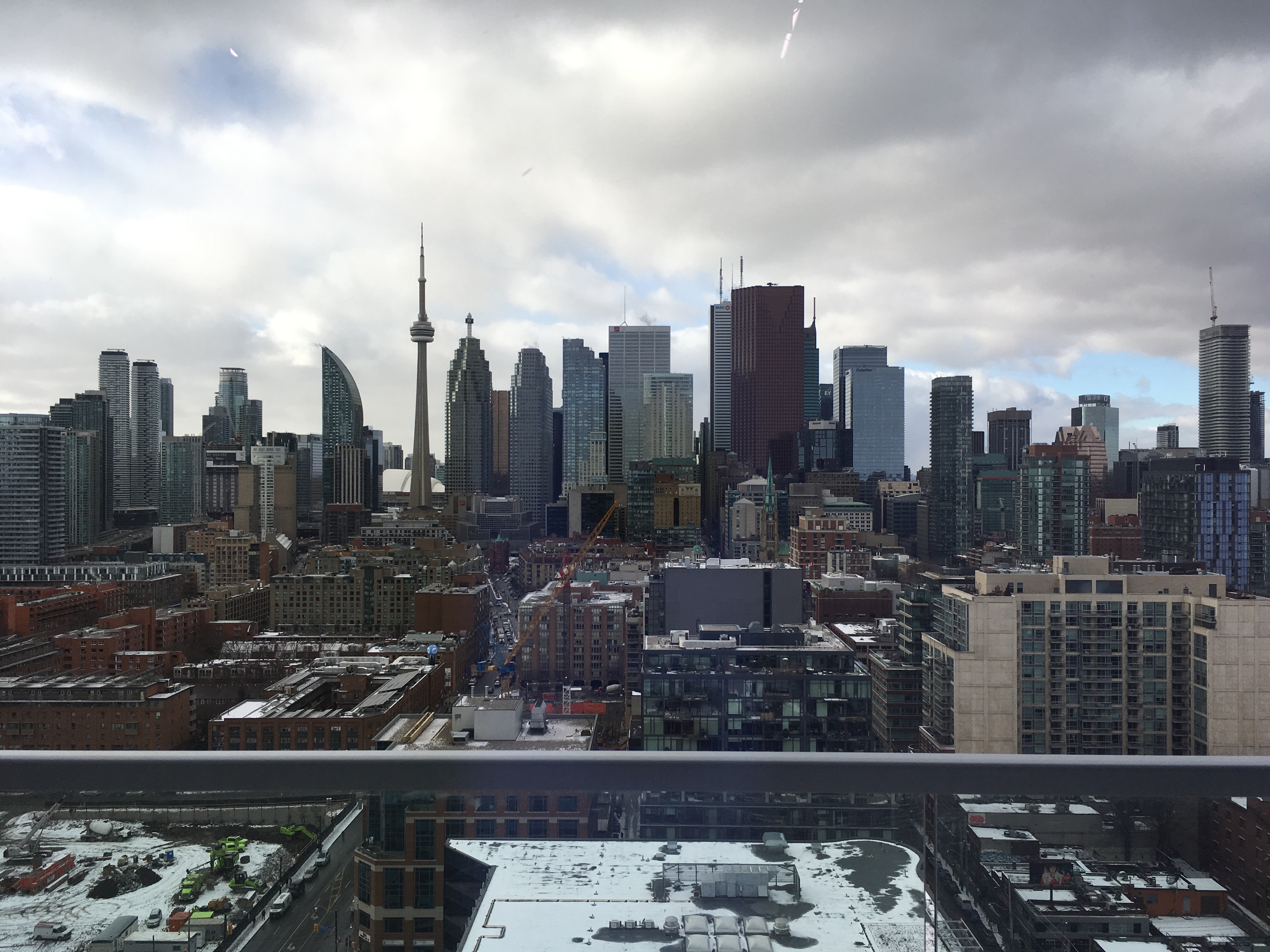Toronto’s skyline has always been a bit too obvious about what Toronto is up to. There’s the phallic CN Tower, a monument to purposeful purposelessness (you just go up it and come down, that’s it) nestled in an increasingly dense outline of skyscrapers, meant to speak to our yearning for status as a global metropolis. The second tallest building in the city for now is the non-descript St. Regis, a moniker hastily changed in 2017 from its original name: The Trump International Hotel and Tower Toronto.
Toronto is eager to please but not necessarily eager to accomplish real things. This is evident in the way it deals with winter. Because in practical terms, what this construction boom actually means is mostly that you’ll find pedestrian detours everywhere that force you to walk through dirty slush and snow so that, eventually, rich people can buy a 600 sq ft box with paper thin walls for just under seven figures. It’s great. Bring on the revolution.
In another less concrete sense, though, construction fever means this city is forever lost in the dreamy self-reflection of the condo render. There on websites and in brochures, in hyperreal, computerized watercolour are our promised futures: tree-lined streetscapes full of smiling, plastic people, and a city of glass towers in which the sun is always shining and it is forever summer.

This is strange. Despite climate change’s rather beneficent tendency to have elongated Toronto’s summers and hurried along its spring, in this city the mercury still starts to drop in late October and, along with most of the city’s residents, stays depressed until April. According to most psychologists, and my endlessly whining friends, this is a really fucking long time for it to stay cold. Winter in a huge city of grey towers can feel endless, so much so that in this city a dumb cartoon—you know that one says “The air hurts my face. Why do I live where the air hurts my face?”—seems, at least from October to April, like the most profound text in all of human creation. Yet in almost every image of the city you see, people are out in shorts and t-shirts and not in the more standard Toronto winter uniform that comes from not knowing how to dress for winter while still needing to show off: say, thin cotton trousers with ankle socks but topped with a $600 down parka.
Torontonians do not approach our annual bitterness with the grim determination of Calgarians or Russians, who know what winter is and thus dress for it, or the artful thoughtfulness of the Scandinavians. Instead, we treat it like a collective trauma to be aggressively and furiously repressed until May. So deep does this forced forgetfulness run that the entire city is designed as if winter simply never happens. Boardwalks are lined with deciduous trees that lie bare for half the year. The forest of skyscrapers that huddle in the city’s core form wind tunnels that will remind you that, no, your face isn’t that aerodynamic and, yes, ears can actually freeze. Sure, there is an underground network of paths—it is, in a classic moment of Canadian creativity, literally called PATH—but it is like the aesthetic inverse of the Parisian arcades, home to generic coffee chains and nail salons and grim-faced nine-to-fivers. Better to brave the wind than immerse yourself in that.

I am still not sure what motivates such avoidance. Perhaps it is because our winter is neither as long nor as harsh as the rest of the country, barring Vancouver of course, which doesn’t count because it’s not a real city but is instead a white retirees’ idea of what one should be. Maybe it’s because we wish to somehow sidestep the reputation of Canadians as a simple, hardy, wintry folk—that, lacking the elegance of a winter in Oslo or Copenhagen, we instead pretend it is merely an inconvenient interruption and not, in fact, the thing that defines this place.
Toronto pushes a lot down: its second-tier status among global cities, for one; for another, the two decades of gentrification, and the way it has driven the poor to the suburbs where they stand in sub-zero temperatures for twenty minutes to catch a bus. Maybe when you design a city in which it is winter for half the year but pretend that isn’t actually true it’s not because you’re secretly waiting for the planet to warm but because you’re not actually willing to face the truth: that this city, like so many other metropolises with too much money, too little housing, and no real leadership, it is getting worse for more people and nobody seems to have the courage to do anything about it.

Toronto in the summer is increasingly electric because that is what happens when a city is flooded with money and people from all over the world. That energy and those towers can make you think Toronto is going somewhere. But towers aren’t there for the poor, they aren’t there for you and me. They are there so they can be captured in an image, taken some time in July when the air is thick and warm, the sky is blue, and the truth of what this place is has been buried deep. For half the year, the wind can cut you in two. Just being outside can kill you. What might this place be if we just admitted that was true?






